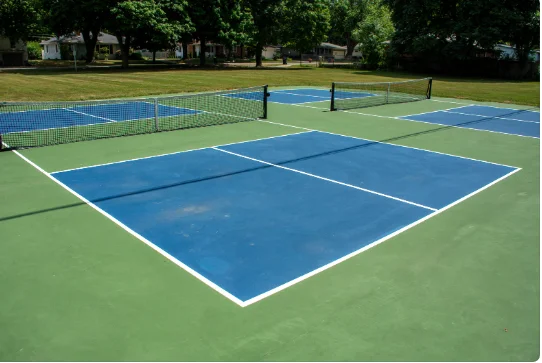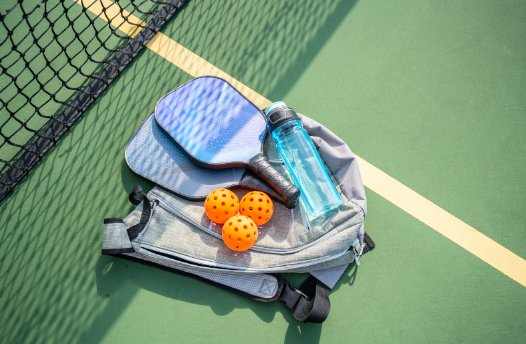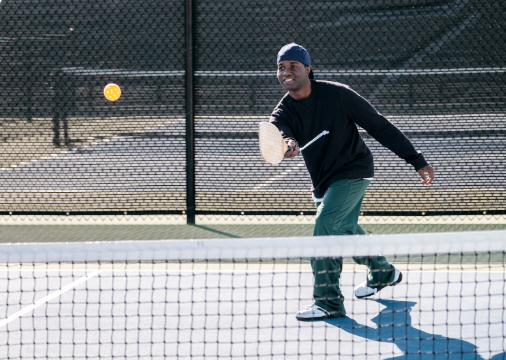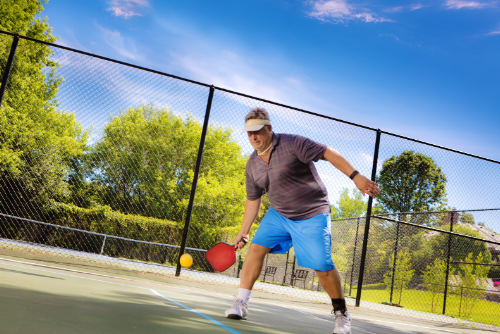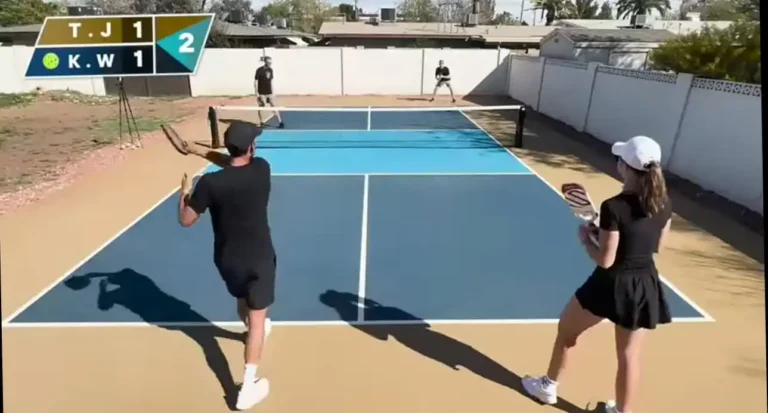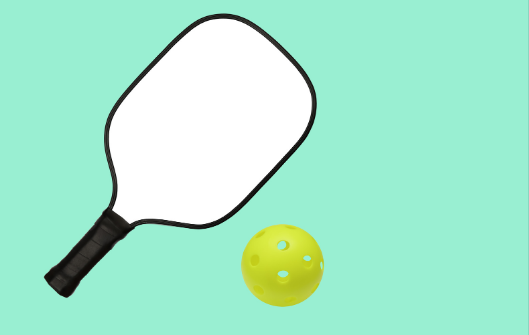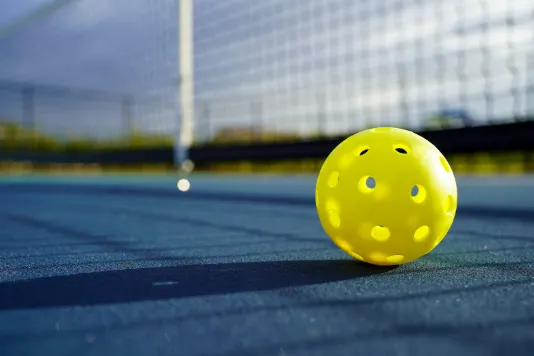Build Your Own Pickleball Paradise: The Essential Materials for a DIY Pickleball Court
Pickleball, a captivating blend of tennis, badminton, and table tennis, is rapidly rising as a global sporting phenomenon. Its charm lies in its simplicity and adaptability, making it a favorite for players of all ages and skill levels. This sport’s increasing popularity has sparked a new trend among enthusiasts: building personal DIY pickleball courts. Embarking on such a project enhances your playing experience and brings the game to your doorstep.
In this comprehensive guide, we delve into the specifics of creating your very own pickleball court. The Essential Materials for a DIY Pickleball Court Whether you’re a seasoned player or new to the sport, this guide is tailored to help you understand the essential materials and layout needed for a DIY pickleball court. We’ll cover everything from selecting the right surface material to the intricacies of court markings and installing nets and posts. We aim to equip you with the knowledge and confidence to build a pickleball court that meets official standards and your personal playing preferences. Let’s embark on this journey to transform your space into a pickleball paradise.
Pickleball Court Dimensions and Surface Material
When planning to build a DIY pickleball court, understanding the standard dimensions and selecting the appropriate surface material are crucial first steps. A regulation pickleball court is 20 feet wide and 44 feet long, a size that ensures enough room for both singles and doubles play. This specific dimension is key to creating an authentic playing experience, mirroring the court proportions used in professional matches.
For the court surface, concrete or asphalt stands as the ideal choice. These materials offer a flat, durable, smooth playing field, crucial for consistent ball bounce and player safety. The importance of a level surface cannot be overstated, as it directly impacts the quality of play and minimizes the risk of injuries. Regular maintenance of these surfaces, such as filling cracks and sealing, can extend their longevity and maintain optimal playing conditions.
In cases where budget constraints are a consideration, there’s a creative workaround. Existing driveways or patios can be cleverly repurposed into pickleball courts. This not only saves on costs but also makes efficient use of available space. However, it’s essential to ensure that these areas conform to the standard dimensions and are marked accurately. The use of proper, durable paint for court markings will ensure clarity and adherence to official pickleball standards. This approach is a testament to pickleball’s versatility and accessibility, making it possible for enthusiasts to enjoy the game in various settings without compromising on the quality of play.
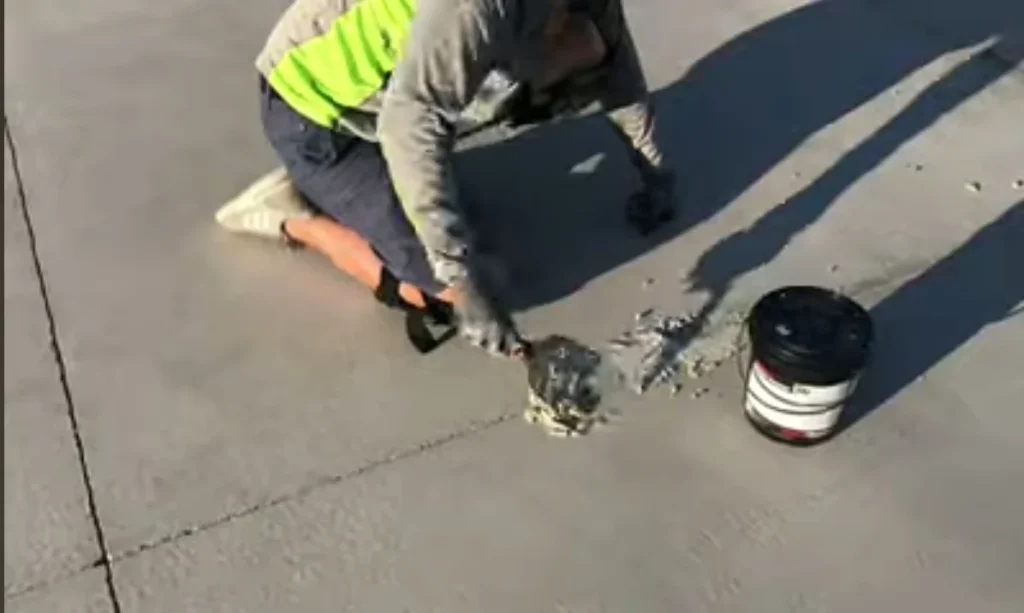
Paint and Court Markings
After preparing your court’s surface, the next pivotal step in constructing your DIY pickleball court is painting and marking the court. The choice of paint is significant; it needs to be a high-quality, durable outdoor paint designed to withstand various weather conditions and the wear and tear of regular play. This type of paint ensures that your court maintains its pristine appearance and functionality over time.
Typically, white paint is used for the court markings, offering a stark contrast against the court surface for clear visibility. These markings are not just for aesthetic purposes but are essential for the accurate play of the game. You’ll need to carefully mark the sidelines and baselines, which define the boundaries of the court. Equally important is the non-volley zone, commonly referred to as ‘the kitchen’, which is a critical area in pickleball gameplay. Additionally, the centerline, which divides the service areas, must be accurately marked.
An important consideration when selecting your paint is its texture. Opt for a non-slip paint to enhance safety. This is crucial in preventing accidents, as pickleball involves quick movements and direction changes. A non-slip surface ensures players can move confidently without the risk of slipping, making your DIY court not only a place of fun but also of safety. The attention to these details in the painting and marking phase lays the foundation for a professional-level pickleball court that promises an enjoyable and secure playing experience.
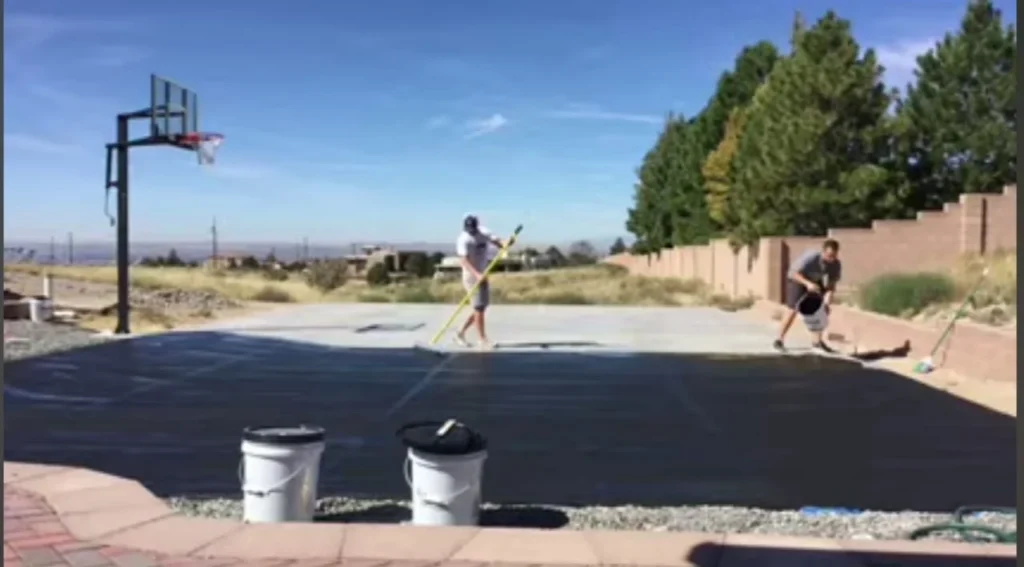
Nets and Posts
In the construction of your DIY pickleball court, the installation of the net and posts is a pivotal step that directly affects the quality of your game. The net serves as the central feature of the court, dividing the playing area and posing a strategic element in the game of pickleball. Adhering to the standard measurements is crucial for a regulation-sized court. The net height should be precisely 36 inches at the sidelines, tapering to 34 inches at the center. This specific height is designed to offer a balanced challenge in gameplay, maintaining the integrity and spirit of pickleball.
When it comes to choosing your net, there are two main options: portable pickleball nets and permanent net posts. Portable nets are an excellent choice for versatility and ease of setup. They are ideal for multi-purpose spaces where the court might need to be cleared for other activities. On the other hand, permanent net posts are more suitable for dedicated pickleball courts. They provide a more stable and durable setup, ensuring that the net remains taut and properly positioned at all times.
Regardless of the type chosen, the quality of the materials is paramount. The nets and posts should be sturdy and weather-resistant to withstand outdoor conditions and the impact of regular play. This durability is key to ensuring that your court remains a reliable and enjoyable place for pickleball for years to come. Additionally, proper installation of the posts is critical to ensure they are securely anchored, providing the necessary support for the net. This attention to detail in selecting and installing your net and posts will significantly enhance the playing experience on your DIY pickleball court.
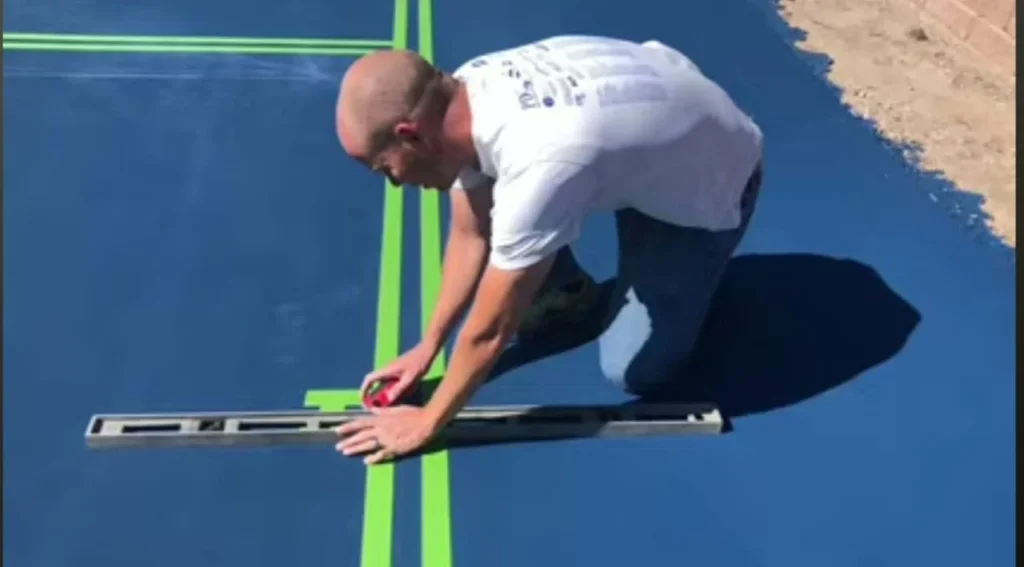
Fencing and Lighting
Incorporating fencing and lighting into your DIY pickleball court not only enhances its functionality but also extends its usability. Fencing is a critical component, primarily serving to contain play within the designated area. This feature is particularly important in preventing the pickleball from leaving the court, which can disrupt the flow of the game and cause inconvenience. Chain-link fences are a popular choice for court fencing due to their durability and visibility. They provide a sturdy barrier without obstructing the view for players and spectators. Additionally, the open weave of chain-link fences minimizes wind resistance, ensuring they withstand various weather conditions without compromising their structural integrity.
Lighting plays a pivotal role, especially for those who enjoy playing pickleball during the evening or in areas with limited natural light. Good quality outdoor lighting is essential to ensure visibility and safety during play. LED lights are the recommended choice for court lighting, celebrated for their long lifespan and energy efficiency. These lights provide bright, consistent illumination, crucial for accurately tracking the ball and ensuring safe movement around the court. Moreover, LED lights are cost-effective in the long run, consuming less power and requiring minimal maintenance compared to traditional lighting options.
Investing in proper fencing and lighting transforms your pickleball court into a versatile, all-hours play area, catering to enthusiasts’ diverse schedules and preferences. This setup not only maximizes the court’s usage but also significantly elevates the playing experience, ensuring that games can be enjoyed safely and comfortably at any time of the day.
Pickleball Paddles and Balls
An essential aspect of setting up your DIY pickleball court is equipping it with the right paddles and balls, as these are fundamental to the game. When selecting paddles, personal comfort and playing style are key considerations. Pickleball paddles come in various materials, weights, and sizes, each offering different advantages. For instance, lighter paddles provide better control and are easier on the arm, making them ideal for beginners or players with limited strength. Heavier paddles, on the other hand, offer more power, suitable for aggressive players. The grip size of the paddle is another crucial factor – it should comfortably fit in your hand to prevent strain and enhance control during play.
The balls used in pickleball are unique and specifically designed to suit different playing environments. There are two main types: those for outdoor play and those for indoor play. Outdoor pickleball balls are typically harder with smaller, more numerous holes, designed to withstand windier conditions and harder surfaces. Indoor balls are softer and have larger holes, optimized for the smoother, less abrasive surfaces found indoors. The choice of ball should align with where your court is located. If your DIY court is outdoors, opt for outdoor balls, and vice versa for indoor settings.
Having the right paddles and balls is crucial for an authentic pickleball experience. They not only affect the quality of play but also ensure that players, regardless of their skill level, have a comfortable and enjoyable game. By carefully selecting these items, you enhance the overall experience of your DIY pickleball court, ensuring it meets the standards of both casual and serious players.
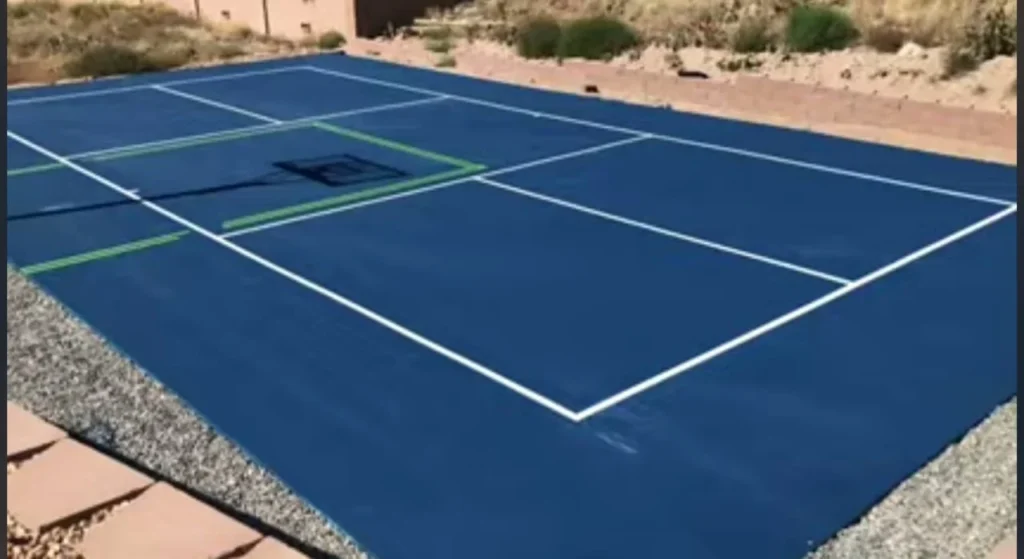
Additional Accessories
Beyond the necessities of paddles and balls, incorporating additional accessories into your DIY pickleball court can significantly enhance its functionality and aesthetic appeal. These accessories not only add convenience but also lend a professional touch to your setup.
One such accessory to consider is benches. Benches provide a comfortable space for players to rest between games and for spectators to enjoy the action. They encourage a social atmosphere, making your court not just a place for physical activity but also a hub for community and interaction. When selecting benches, consider durable materials that withstand outdoor elements, ensuring they remain in good condition for years.
Scorekeepers are another valuable addition. They bring an element of seriousness and competition to the game, allowing players to easily track points during matches. This is especially useful during tournaments or friendly competitions, adding to the excitement and engagement of the game. Portable scorekeepers are available, which can be easily moved and stored when not in use.
Ball holders are also practical accessories. They provide a convenient way to store and access pickleballs, keeping the court organized and ensuring that play is not interrupted by lost or stray balls. Additionally, ball holders can prevent the balls from rolling away, reducing the risk of trips and falls.
By incorporating these additional accessories, your DIY pickleball court transforms from a mere playing area into a well-equipped, inviting space for both players and spectators. These enhancements not only improve the functionality of your court but also contribute to an overall enjoyable and professional pickleball experience.
Conclusion
The endeavor of building a DIY pickleball court represents more than just a construction project; it’s an investment in your passion for a sport that combines fun, fitness, and friendly competition. Creating this space in the comfort of your own home brings a unique sense of accomplishment. With the guidance provided on essential materials, layout, and accessories, the process becomes a rewarding journey rather than a daunting task.
As you embark on this project, remember that each step, from preparing the surface to adding the final touches with accessories, contributes to crafting a personalized pickleball experience. This court will not only be a place for physical activity but also a sanctuary for social interaction, laughter, and memorable moments with friends and family. The physical effort and time invested in constructing the court are small compared to the endless hours of enjoyment, exercise, and the enhancement of your pickleball skills that it will provide.
Moreover, having your pickleball court allows for the flexibility to play at any time, fostering a consistent and active lifestyle. The sense of community it can create, bringing together like-minded enthusiasts, adds another layer of joy to the sport. In conclusion, while the journey of building your DIY pickleball court may require effort and dedication, the resulting personal pickleball haven is a priceless addition to your home, offering immeasurable rewards in health, happiness, and community connection.

